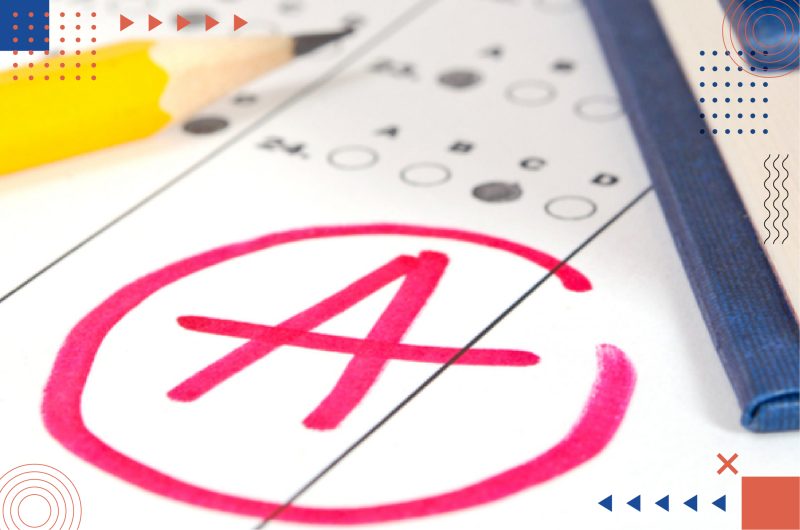PSLE & its Cut-Off Points
Students and parents facing PSLE always have doubts and queries regarding the exam, scoring system, and marks. Ever since the new AL scoring system was implemented in 2021, there has been an increased sense of uncertainty regarding the marks and, most importantly, the cut-off point.
The indicative cut-off points are based on the PSLE scoring system. These scores will serve as a stepping point for Primary 6 cohorts to enter secondary school in 2021.
What is all the hype and confusion about the PSLE cut off points? It's all about the new AL scoring system drafted and implemented by Singapore's Ministry of Education (MoE). Under the new scoring system, Primary 6 students are banded achievement levels of AL1 to 8 for each of the four subjects. The final PSLE score is the sum of all the ALs and ranges from 4 to 32, with 4 being the best possible score.
Let's look at the most frequently asked questions about Cut-Off Points (COP) in PSLE.
FAQs About PSLE Cut Off Points
1. How are the cut off points for each secondary school determined?
Secondary school PSLE scores are calculated using the PSLE scores of the first and last student admitted to the school in the preceding year. The school's COPs are calculated based on the scores of the last student admitted to the school.
A pupil's subject score is first calculated in AL terms based on their raw score in each subject. To calculate a pupil's total PSLE score, the MoE adds the AL scores for each PSLE subject.
A secondary school's PSLE scores and COP may vary every year, and the PSLE score ranges are based purely on:
- The cohorts' PSLE results
- Their school choices
Is your child completing his/her primary education this year? Succeeding in the PSLE requires months of hard work, practice and guidance. StudySmart's PSLE learning platform provides your child with personalised help and dedicated resources. Know more about our: PSLE English, PSLE Maths, PSLE Science.
2. The MoE says, "students have a range of schools to choose from at each PSLE score." What does this mean?
Under the new AL scoring system, there are many schools with COPs at each PSLE score, from 6 to 30. These schools are based on the indicative score ranges generated by 2020 Secondary 1 Posting Exercise. Consequently, students have a range of secondary school options at each PSLE score. They can also consider schools with COPs that don't exactly correspond to their PSLE scores.
Moreover, the MoE encourages students and parents to look beyond COPs and choose schools that best align with their child's academic interests.
3. Does my child have a higher chance of acquiring a seat in a particular school if they fulfil the school's indicative COP?
Not at all. There is no guarantee that students will be admitted to a school only because they meet the indicative COPs. Sometimes, more than two students with the same PSLE scores may be vying for the last place in the school. In that case, three tiebreakers are used to determine which student gets the seat. The tiebreakers are:
- Singapore citizenship
- School choice order
- Computerised balloting
4. Why are there no schools with indicative PSLE cut-off points of 4 or 5 in 2021?
It is well-known that the indicative cut-off point is based on the PSLE score of the last student admitted to the school. Based on MOE's 2020 Secondary one posting exercise simulations, schools with cut-off points of 4 or 5 for last year's PSLE students did not exist. Therefore, there were no schools with cut-off points for the same.
5. Why do some schools end up with the same COP?
One of the prime objectives of the AL system is to reduce the fine differentiation between PSLE scores. This is one of the reasons why there are only 29 possible PSLE scores as opposed to the 200 possible aggregates in the previous T-scoring system. The reduced differentiation means that many schools have the same COP, thereby giving students a wider range of choices.
6. How will parents choose the right school if the indicative COP is the same for many schools?
It should be noted that, unlike the T-scoring system, the indicative COPs will vary every year based on two factors:
- The previous year's cohort's PSLE scores
- Their school choices in the Secondary 1 Posting Exercise
With so many schools to choose from, the MoE suggests parents should avoid prioritising the school's COPs. Rather, they should consider if the school aligns with their child's academic interests.
7. In the unlikely event that my child cannot get into any of the schools listed under their six choices, what should I do?
There are two things you can do to improve your child's chances of getting listed in schools:
- Choose a preferred school with a higher rank.
- Include two or three other options where your child's PSLE score is more than the schools' COPs.
Despite these efforts, if your child is not listed in any school of their choice, they will be posted to the nearest school with available vacancies. This process is also based on your child's PSLE scores and registered residential address.
Also Read : Ways to Determine Your PSLE Scores With the PSLE Calculator
8. With fewer possible PSLE scores and more schools at every score, are there more chances for computerised balloting?
Computerised balloting is the final tiebreaker used to help determine the student eligible for the last place in school. Therefore the chances of more computerised balloting depend entirely on the first two tiebreakers, which are:
- Singapore citizenship
- School choice order
If both these tiebreakers do not help decide which students get the last seat in school, computerised balloting is the only way to achieve the result.
9. Will streaming continue? If so, why?
Yes, of course, streaming will continue and students will be assigned to Express, Normal (Technical) and Normal (Academic) courses till 2023. The indicative cut off points for streaming are as follows:
| Course | Range |
|---|---|
| Express | 15 - 20 |
| Normal (Academic) | 21 - 24 |
| Normal (Technical) | 25 - 28 |
Streaming option will be open to cater to the needs of children who want to learn at a comfortable pace. However, students who can demonstrate their academic capabilities can transfer to more demanding courses in secondary school.
The Take Away About COPs
Thanks to the new AL scoring system, schools will now be less differentiated by COPs. For the student community, this means a better and wider range of schools to choose from. To simplify your choice, you may want to consider factors like:
- Your child's learning needs and interests
- Co-curricular activities offered by the school
- School culture and ethos
- Distance between your home and school
- Location of the school
On an ending note, let's underline one aspect: The scoring system and the COPs do not, in any way, alter the importance of the PSLE. How your child prepares to face this all-important exam makes a difference. Here's where a smart app like StudySmart can help your child. StudySmart is the best PSLE preparation app for personalizing and optimizing your child's exam preparation strategies. Based on the Pomodoro study technique, StudySmart is packed with powerful features that make it a worthy investment. To know more, contact our team today.

